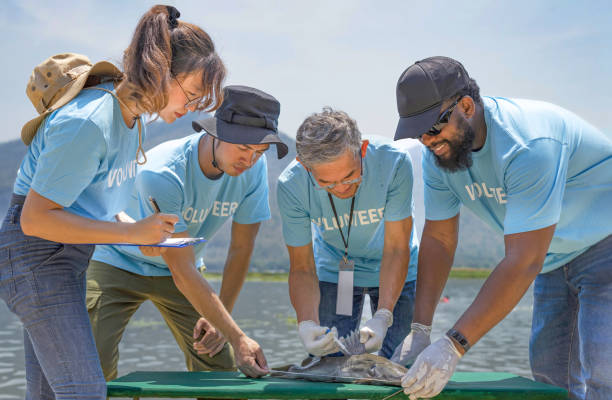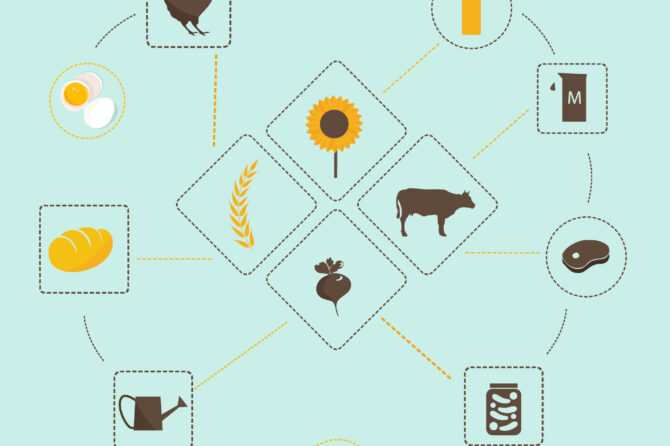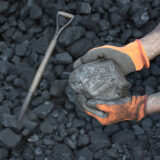The health of fish in aquaculture holds a pivotal role in ensuring sustainable and profitable operations. As the global demand for seafood continues to surge, the aquaculture industry faces escalating challenges in maintaining the well-being of its aquatic populations. In this context, advancements in fish health management have emerged as a critical area of focus. This blog post aims to explore the latest breakthroughs in fish health management and the integration of biotechnology as a potent tool in disease prevention and overall fish well-being.
This blog post will delve into the current state of fish health in aquaculture, outlining the challenges faced by the industry and the implications of disease outbreaks. We will also explore the conventional methods that have been employed in the past and shed light on their strengths and shortcomings. The subsequent sections will introduce the paradigm shift brought about by biotechnology, examining specific advancements and their practical applications in fish farming.
Join us on this journey as we navigate the intricate world of fish health and biotechnology. By understanding these developments, we hope to not only empower fish farmers and stakeholders but also contribute to a more sustainable and resilient aquaculture industry for generations to come. Stay tuned for a comprehensive exploration of the groundbreaking biotechnological solutions revolutionising fish health management.
The State of Fish Health in Aquaculture
The aquaculture industry stands at a critical juncture, tasked with meeting the ever-growing demand for seafood while contending with formidable challenges in fish health management. Disease outbreaks in aquaculture can be devastating, leading to significant economic losses and environmental repercussions. Understanding the current state of fish health is paramount in devising effective strategies for prevention and management.
Current Challenges:
One of the primary challenges faced by the aquaculture industry is the susceptibility of fish populations to diseases. Overcrowded conditions, environmental stressors, and global transportation networks can facilitate the rapid spread of pathogens. Moreover, the close proximity of fish in aquaculture settings creates an environment conducive to disease transmission. This dynamic necessitates vigilant monitoring and intervention to maintain healthy fish populations.
Impact of Diseases:
The impact of diseases on fish farms reverberates through the entire industry. Outbreaks can lead to substantial economic losses for farmers, including the costs of treatment, reduced yields, and even total stock losses. Beyond the financial implications, disease outbreaks can have profound ecological consequences. Escaped pathogens and treatment residues can potentially harm wild fish populations and their habitats.
Environmental Sustainability and Disease Management:
Addressing disease challenges in aquaculture is not only a matter of economic viability but also a crucial component of environmental sustainability. Sustainable aquaculture practices aim to minimise the environmental footprint of fish farming operations. Achieving this goal requires effective disease prevention and management strategies that mitigate the impact of disease-related interventions on aquatic ecosystems.
Research and Innovation:
The urgency of the situation has spurred intensive research efforts to better understand fish health dynamics and develop innovative solutions. Scientists and aquaculture experts are exploring a range of approaches, from improved husbandry practices to the integration of advanced technologies. Among these, biotechnology stands out as a promising frontier, offering a suite of tools to enhance disease resistance and overall fish well-being.
As we navigate the complexities of fish health in aquaculture, it becomes evident that a multifaceted approach is essential. This includes improved biosecurity measures, responsible management practices, and the judicious use of advanced technologies.
Traditional Approaches to Fish Health
While the aquaculture industry has made significant strides in fish health management, traditional approaches have long served as the foundation for disease prevention and management. These time-tested methods form an integral part of maintaining healthy fish populations. However, it is crucial to recognize their strengths and limitations.
1. Biosecurity Measures:
Biosecurity protocols are fundamental in preventing the introduction and spread of diseases in aquaculture facilities. These measures encompass a range of practices, including strict quarantine procedures for new fish stock, controlled access to facilities, and disinfection protocols. By minimising the risk of pathogen introduction, biosecurity measures are instrumental in averting potential disease outbreaks.
2. Water Quality Management:
Maintaining optimal water quality is paramount for fish health. Proper filtration, aeration, and monitoring of water parameters such as temperature, pH, and oxygen levels are essential. Well-maintained water quality not only supports the overall health of fish but also bolsters their immune systems, making them more resilient to potential pathogens.
3. Nutritional Strategies:
A balanced and nutritious diet is a cornerstone of fish health. Properly formulated feeds provide essential nutrients, vitamins, and minerals necessary for growth and immune function. Additionally, specialised feeds with immune-boosting additives can enhance disease resistance.
4. Veterinary Intervention and Disease Diagnosis:
In cases where disease outbreaks occur, timely and accurate diagnosis is crucial. Veterinarians play a pivotal role in identifying pathogens, prescribing appropriate treatments, and advising on disease management strategies. Regular health checks and proactive veterinary care are essential components of traditional disease management.
Limitations of Traditional Approaches:
While traditional methods have proven effective in many cases, they are not without their limitations. For instance, relying solely on biosecurity measures may not entirely eliminate the risk of disease introduction. Moreover, some pathogens may develop resistance to treatments over time, necessitating the exploration of alternative approaches.
As the aquaculture industry continues to evolve, it is imperative to acknowledge the evolving nature of disease challenges. Traditional approaches, while invaluable, may benefit from augmentation with innovative technologies and biotechnological solutions.
The Rise of Biotechnology in Fish Health

In recent years, biotechnology has emerged as a transformative force in fish health management. This cutting-edge field leverages biological processes and genetic manipulation to enhance disease resistance and overall well-being in fish populations. The integration of biotechnological solutions holds great promise for revolutionising how we approach disease prevention and management in aquaculture.
1. Genetic Selection for Disease Resistance:
One of the most groundbreaking aspects of biotechnology in fish health is the ability to selectively breed for disease resistance. Through meticulous genetic profiling, researchers can identify and propagate traits associated with heightened resistance to specific pathogens. This approach not only reduces the susceptibility of fish populations to diseases but also minimises the reliance on pharmaceutical interventions.
2. Vaccination and Immunostimulants:
Biotechnology has ushered in a new era of advanced vaccines and immunostimulants tailored specifically for fish. These innovative formulations bolster the immune systems of fish, providing heightened protection against a spectrum of pathogens. By stimulating the production of antibodies and enhancing immune response, vaccines and immunostimulants represent a proactive defence against diseases.
3. Probiotics and Microbial Solutions:
Harnessing beneficial microorganisms is a cornerstone of biotechnological approaches to fish health. Probiotics, beneficial bacteria and microalgae, play a pivotal role in maintaining a balanced microbial community within aquaculture systems. They help regulate water quality, support digestion, and compete with harmful pathogens, ultimately fortifying the health of fish.
4. Environmental Monitoring and Control Technologies:
Biotechnology extends beyond biological interventions to encompass advanced environmental monitoring and control technologies. Automated systems and sensors allow for real-time monitoring of crucial parameters such as water quality, temperature, and oxygen levels. This data-driven approach enables swift responses to any deviations that could potentially compromise fish health.
The integration of biotechnology into fish health management represents a paradigm shift in the aquaculture industry. By leveraging the power of genetic manipulation, targeted immunisation, and microbial ecology, biotechnological interventions offer a holistic and sustainable approach to disease prevention. These advancements not only enhance the resilience of fish populations but also contribute to the overall sustainability of aquaculture operations.
Key Technological Advancements
The integration of biotechnology in fish health management brings forth a range of innovative solutions that have the potential to revolutionise the aquaculture industry. These advancements address specific challenges in disease prevention and overall fish well-being, offering a comprehensive approach to ensuring healthy and thriving fish populations.
1. Genetic Selection for Disease Resistance:
Genetic selection stands at the forefront of biotechnological advancements in fish health. By identifying and breeding fish with heightened resistance to specific pathogens, aquaculturists can significantly reduce the risk of disease outbreaks. This approach not only minimises the need for pharmaceutical interventions but also leads to stronger and more resilient fish stocks.
2. Vaccination and Immunostimulants:
Biotechnology has propelled the development of highly effective vaccines and immunostimulants tailored for fish species. These formulations stimulate the fish’s immune system, providing enhanced protection against a spectrum of pathogens. The result is a proactive defence mechanism that significantly reduces the likelihood of disease outbreaks.
3. Probiotics and Microbial Solutions:
Beneficial microorganisms, harnessed through biotechnological means, play a pivotal role in fish health management. Probiotics, including beneficial bacteria and microalgae, contribute to a balanced microbial ecosystem within aquaculture systems. They aid in regulating water quality, supporting digestion, and outcompeting harmful pathogens, ultimately bolstering the health of fish.
4. Environmental Monitoring and Control Technologies:
Biotechnology extends its influence to environmental monitoring and control, providing sophisticated tools for ensuring optimal conditions within aquaculture facilities. Automated systems and advanced sensors enable real-time monitoring of crucial parameters like water quality, temperature, and oxygen levels. This data-driven approach empowers aquaculturists to respond swiftly to any deviations that could compromise fish health.
5. Disease Diagnostics and Precision Medicine:
Advancements in biotechnology have led to more precise and rapid disease diagnostics. Molecular techniques, such as DNA-based tests, allow for early detection of pathogens, enabling timely intervention. Additionally, the concept of precision medicine is gaining traction, tailoring treatments to the specific needs of individual fish populations.
These biotechnological advancements collectively represent a monumental leap forward in fish health management. By harnessing the power of genetic manipulation, targeted immunisation, microbial ecology, and advanced monitoring, the aquaculture industry is poised to overcome longstanding challenges and usher in a new era of sustainable and thriving fish farming.
Investment Opportunities in Biotech Solutions for Fish Farming
The integration of biotechnological solutions in fish farming presents a compelling investment landscape, characterised by innovation, sustainability, and the potential for substantial returns. As the aquaculture industry continues to expand to meet the global demand for seafood, the role of biotechnology in ensuring the health and productivity of fish populations cannot be understated. Here, we delve into the investment opportunities that arise from this dynamic intersection.
1. Market Trends in the Biotech Sector for Aquaculture:
The biotechnology sector within aquaculture is experiencing a surge of interest and investment. Industry reports indicate a steady growth trajectory, driven by a confluence of factors. Increasing consumer awareness of sustainable seafood production, coupled with a growing emphasis on responsible aquaculture practices, has spurred demand for innovative solutions. Investors are recognizing the potential for biotechnological interventions to address critical challenges in fish health management.
2. Potential Returns on Investment:
Investing in biotech solutions for fish farming offers the potential for substantial returns, both financially and environmentally. By enhancing disease resistance and overall fish well-being, biotechnological interventions can lead to higher survival rates, increased growth rates, and improved feed conversion ratios. This translates into higher yields and profitability for fish farmers.
3. Economic Viability of Biotech Interventions:
Biotechnological advancements in fish health management have demonstrated their economic viability through tangible benefits for aquaculture operations. Reduced reliance on pharmaceutical interventions, lower mortality rates, and improved overall health of fish populations contribute to cost savings. Additionally, enhanced productivity leads to increased revenue streams for fish farmers.
4. Diversification and Risk Mitigation:
Investing in biotech solutions for fish farming offers an avenue for diversification within the broader agribusiness sector. The inherent resilience of aquaculture to certain economic and environmental challenges, coupled with the potential for biotechnology to mitigate disease-related risks, positions this investment category as an attractive option for portfolios seeking diversification.
5. Contribution to Sustainable Aquaculture:
Beyond financial returns, investments in biotech solutions for fish farming align with the broader goals of sustainable aquaculture. By bolstering disease resistance and reducing the environmental impact of fish farming operations, these interventions contribute to the long-term viability of the industry. Responsible and sustainable aquaculture practices are increasingly valued by consumers and stakeholders alike.
Ethical and Environmental Considerations
As we navigate the landscape of biotechnological interventions in fish health management, it is imperative to address the ethical and environmental implications of these advancements. While the potential benefits are significant, it is crucial to approach the integration of biotech solutions with a thoughtful and balanced perspective.
1. Implications on Ecosystems:
Biotechnological interventions, particularly those involving genetic modification, may have implications on natural ecosystems. There is a need to carefully evaluate the potential for altered genetic traits to interact with wild populations, potentially impacting biodiversity and ecological balance. Rigorous risk assessments and containment measures are essential to mitigate any unintended consequences.
2. Ethical Concerns Regarding Genetic Modification:
The genetic modification of fish to enhance disease resistance raises ethical questions surrounding the manipulation of natural genetic code. Striking a balance between advancements in fish health and respecting the integrity of natural genetic diversity is a critical consideration. Transparency, informed consent, and robust ethical frameworks should underpin any genetic modification efforts.
3. Biosafety and Biosecurity Measures:
The introduction of biotechnological interventions necessitates stringent biosafety and biosecurity measures. Safeguarding against accidental release or unintended consequences of modified organisms is of paramount importance. Adhering to established protocols and implementing rigorous containment measures helps mitigate potential risks.
4. Long-Term Viability and Sustainability:
Biotechnological interventions should be evaluated in the context of their long-term viability and sustainability. Considerations should include the potential for resistance development in target pathogens, as well as the broader impacts on the aquaculture ecosystem. Continuous monitoring and adaptive management strategies are essential to ensure the effectiveness and sustainability of biotech solutions.
5. Public Perception and Consumer Acceptance:
Public perception and consumer acceptance play a crucial role in the adoption of biotechnological interventions in aquaculture. Transparency, education, and open dialogue are essential in building trust and addressing concerns. Engaging with stakeholders, including consumers, environmental organisations, and regulatory bodies, fosters a collaborative approach to responsible biotech integration.
Incorporating ethical and environmental considerations into the implementation of biotech solutions is essential for ensuring the responsible advancement of fish health management. By navigating these complex issues with diligence and care, we can harness the potential of biotechnology while upholding the integrity of our natural ecosystems.
Regulatory Framework and Industry Adoption
As biotechnological interventions in fish health management continue to evolve, a robust regulatory framework is essential to ensure responsible and safe implementation. This section explores the current regulatory landscape and industry perspectives on the adoption of biotech solutions in aquaculture.
1. Current Regulatory Framework:
Regulation of biotechnological interventions in aquaculture varies by region and country. Regulatory bodies assess the potential environmental and health impacts of these technologies before granting approvals for their use. This process includes thorough risk assessments, evaluations of containment measures, and consideration of ethical and environmental implications.
2. Risk Assessment and Mitigation Strategies:
Regulatory agencies employ rigorous risk assessment protocols to evaluate the safety and efficacy of biotechnological interventions. This involves assessing potential environmental impacts, the likelihood of unintended consequences, and the effectiveness of containment measures. Mitigation strategies, such as strict confinement and monitoring, are often mandated to minimise potential risks.
3. Industry Perspectives and Adoption Trends:
The aquaculture industry’s perspective on biotechnological interventions is influenced by factors such as economic viability, sustainability goals, and consumer demand. Many industry stakeholders recognize the potential benefits of biotech solutions in enhancing fish health and productivity. However, concerns about regulatory compliance, public perception, and ethical considerations also influence adoption decisions.
4. Collaboration Between Stakeholders:
Effective regulation and adoption of biotech solutions require collaboration among stakeholders, including government agencies, research institutions, industry players, and environmental organisations. Open communication and shared responsibility are essential in addressing ethical, environmental, and regulatory considerations.
5. International Coordination and Standards:
Given the global nature of the aquaculture industry, international coordination on regulatory standards is crucial. Harmonised guidelines and standards facilitate the responsible adoption of biotech solutions across different regions. Forums for information exchange and best practices sharing play a vital role in promoting consistent and effective regulation.
6. Transparency and Public Engagement:
Transparency and public engagement are integral to building trust in the regulatory process. Informed public discourse, stakeholder consultations, and opportunities for public input help ensure that regulatory decisions align with societal values and expectations.
The evolving regulatory framework and industry perspectives on biotechnological interventions in fish health management reflect a dynamic and rapidly advancing field. By striking a balance between innovation and responsible oversight, we can harness the potential of biotechnology to enhance the sustainability and productivity of aquaculture.
Conclusion
The landscape of fish health management stands at the precipice of a transformative era, driven by the convergence of biotechnology and innovative practices. The strides made in genetic selection, immunisation strategies, and environmental monitoring herald a future where fish farming can be more sustainable, efficient, and resilient.
While traditional methods have been the bedrock of fish health management, the integration of biotechnology offers a quantum leap in our ability to safeguard fish populations from disease. Genetic manipulation, precision medicine, and advanced diagnostics are reshaping the way we approach health in aquaculture.
However, as with any innovation, it is crucial to proceed thoughtfully and responsibly. Ethical considerations, environmental impacts, and regulatory frameworks must be carefully navigated. The delicate balance between advancing fish health and preserving natural ecosystems requires continuous diligence and collaboration among all stakeholders.
As we venture into this new frontier, there is a collective responsibility to ensure that these advancements benefit not only the aquaculture industry but also the broader ecosystem and global food security. Through transparent dialogue, rigorous oversight, and a commitment to sustainable practices, we can pave the way for a future where fish farming is both economically viable and environmentally sound.
The potential for biotechnology to revolutionise fish health management is immense. With ongoing research, responsible implementation, and an eye towards long-term sustainability, we can look forward to a future where aquaculture plays a central role in meeting the world’s growing demand for seafood.












